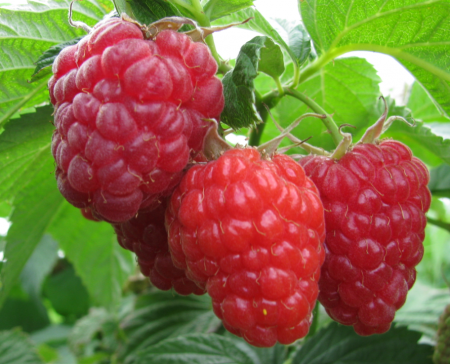
In the summer I really want to enjoy fresh berries! One of the most popular berry crops is raspberries. It can often be found in garden areas. Raspberries have a sweet taste and a stunning aroma that excites appetite. Berries contain a large amount of vitamins and minerals. They have a beneficial effect on the body, replenishing its energy balance.
Raspberries can be consumed fresh, it is perfectly frozen. Often jam is made from berries or jam, jelly is made from it. Raspberries go well with other berries like currants, strawberries, blackberries. Therefore, for jam, you can use several varieties of berry crops.
Content
Characteristic and Description
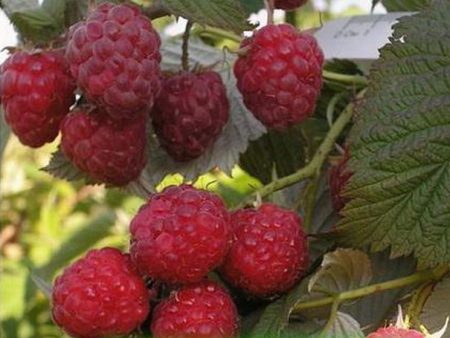
A powerful bush reaches a height of 1.5 meters. Thin and sharp spikes are located on the stems of the bushes. Raspberry leaves slightly curl toward the center, painted green.
The variety begins to bear fruit in the second year after planting. The berry has a mass of 4-5 grams, the shape of the fruit is spherical, and the color is dark red. The berry contains small bones inside the pulp. The taste is sweet, but not cloying, complemented by a touch of sourness.
With proper cultivation, the shrub is excellent in fruiting and is capable of producing 9-10 tons of berries per 1 hectare or 3 kilograms per bush.
The Cleopatra variety was bred by domestic breeders, taking into account the diverse Russian climate. When breeding, immune properties were taken into account, so Cleopatra is not afraid of most diseases and insects. The variety also has resistance to frost, survives winter well and does not freeze.
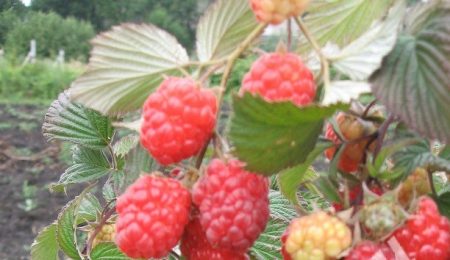
Growing and caring for Cleopatra raspberries
Raspberries are planted in autumn or spring. For growing berries need seedlings. Seedlings are planted in open ground. Raspberry soil should be slightly acidic or neutral. It is advisable to choose a seat away from growing potatoes, tomatoes or strawberries. Various pests and diseases can be transmitted from these crops to raspberries. The landing area should be in the illuminated area, but a slight shadow may be present. Direct sunlight in the summer shines brightly and can dry berries and leaves. It will be good if a fence is located next to raspberries, it serves as a protection against gusts of wind and sun.
To plant green seedlings in the ground make holes measuring about 40 by 50 centimeters. The roots of the seedlings are treated in a concentrated mixture of water and mullein and lowered into a dug hole. In the earth there are only one roots, the root neck of the bush remains on the surface of the earth. Пос cup of ash is added to the soil during planting. Sprinkle on top with fertile soil. Between adjacent bushes should be a distance of about 1 meter.
There is another landing method - trench. They dig a trench in the ground with a width and depth of 50 centimeters. A nutrient mixture based on cow manure, superphosphate, compost is poured into the trench. Bushes are planted in a covered trench at a distance of 50-70 centimeters from each other. When all the bushes are planted, the soil is well moistened and mulched with peat or humus.
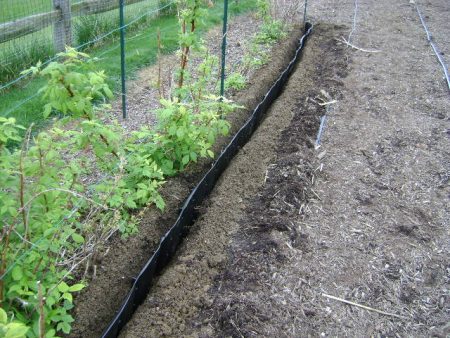
Raspberries love moisture, so you need to water the shrub 3-4 times a week, especially during a drought and lack of rain.However, if the soil is still moist from the last time, then raspberries need not be watered. With excess moisture, the bush undergoes decay. Hose raspberries with a hose or watering can. You can use a drip irrigation system, it is characterized by the efficiency of water.
During the period of active growth of bushes raspberries are tied. A trellis garter is good. For it, you need to drive several columns into the ground and pull a wire between them. Raspberry bushes should appear inside the wire. Then they are tied up under a slight slope.
In the second part of May or June, white flowers appear on raspberries. This indicates the imminent fruiting of the bush. The more inflorescences formed on the bushes, the more berries will appear in the future. In the first year of planting, raspberries are unlikely to bloom and bear fruit, but if the bush is grown in the south, then it is quite possible that in August there will be a few berries.
In the second year after planting in the middle of summer, berries appear on the bushes. First, they are painted a pale yellow color, and then the color is gaining intensity, and the berry is noticeably enlarged. The maximum yield is observed in late July or early August. At this time, all the bushes are hung with berries. Harvesting is carried out daily. The berries are picked carefully so that they are not crushed or crushed. If overripe berries remain on the bush, this worsens the yield and slows the growth of new fruits. Therefore, it is important to collect raspberries in a timely manner.
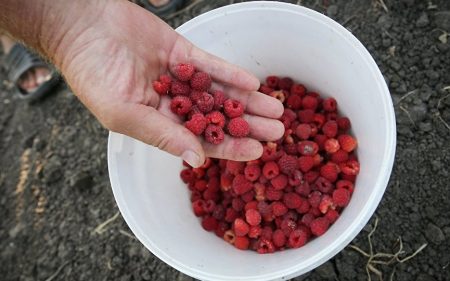
After the berry is picked up, it is washed, dried. If possible, raspberries are immediately used as food or prepared from it. The maximum safe shelf life of ripe berries is two days (in the refrigerator). After this time, raspberries can ferment or sour.
After harvesting, the bushes are prepared for the upcoming winter. This is done no later than the end of September - before the onset of frost. Excess shoots and green foliage are cut from the bush. Those branches that remain next year also shorten a little. Now the stems of the bush need to be lowered to the bottom, to the ground. You can fix them in this position by binding. If the winter in the region is harsh (the temperature drops below 20 degrees below zero), then raspberries need to be covered with a cloth or film for the winter. So the bush will survive the winter well, and next spring will again be ready for fruiting.
Cleopatra Grade Advantages
- sweet taste with sourness;
- average berry size and beautiful color;
- resistance to frost;
- unpretentiousness in breeding and care;
- landing options for the winter;
- high yield.
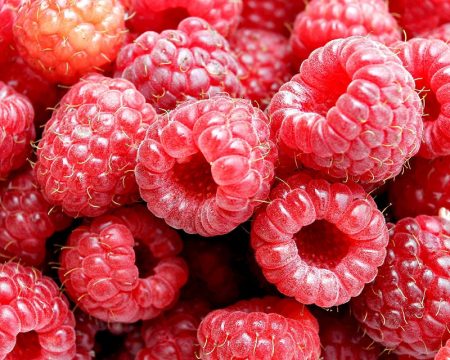
Gardeners reviews raspberries Cleopatra
Alena says about the variety: “Cleopatra raspberry is my favorite berry in the summer. It has been growing excellently for three years in a row, the bushes were cut every spring. I use berry for jam, we still love to eat fresh. ”
Alexandra from the Krasnodar Territory wrote: “The variety is really good and does not require excessive attention. Timely watering and pruning is all that is needed for successful breeding. I grow 5 raspberry bushes, but the yield is large. It’s enough to cook berries and jam, and just feast on it. ”


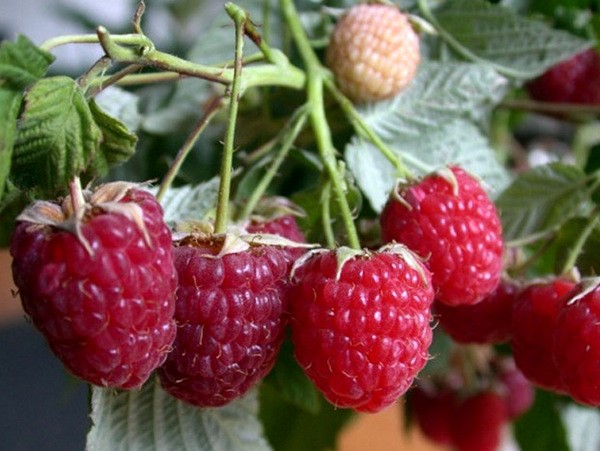
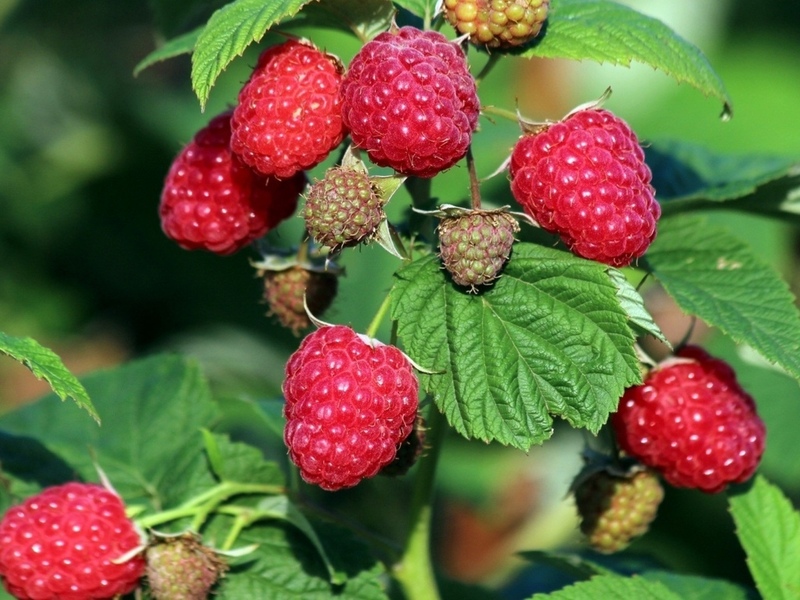
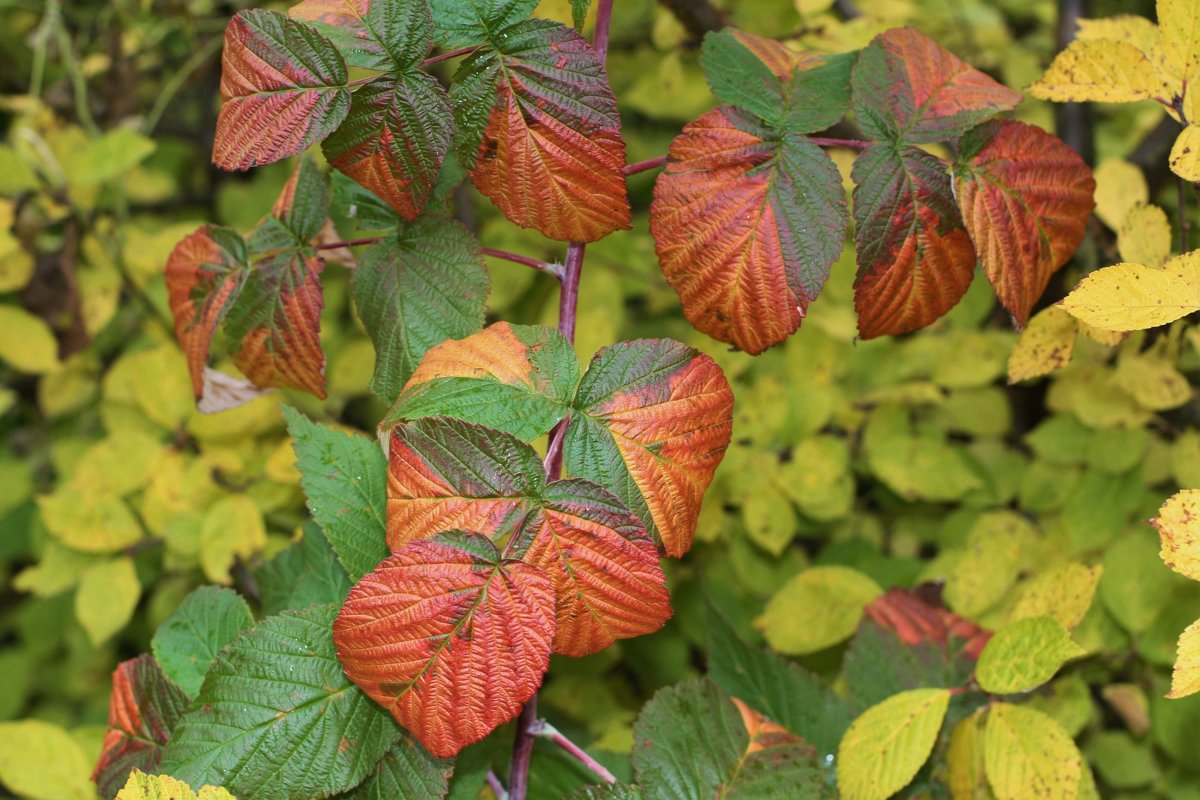 Black raspberries in autumn: care and preparation for winter shelter, pruning
Black raspberries in autumn: care and preparation for winter shelter, pruning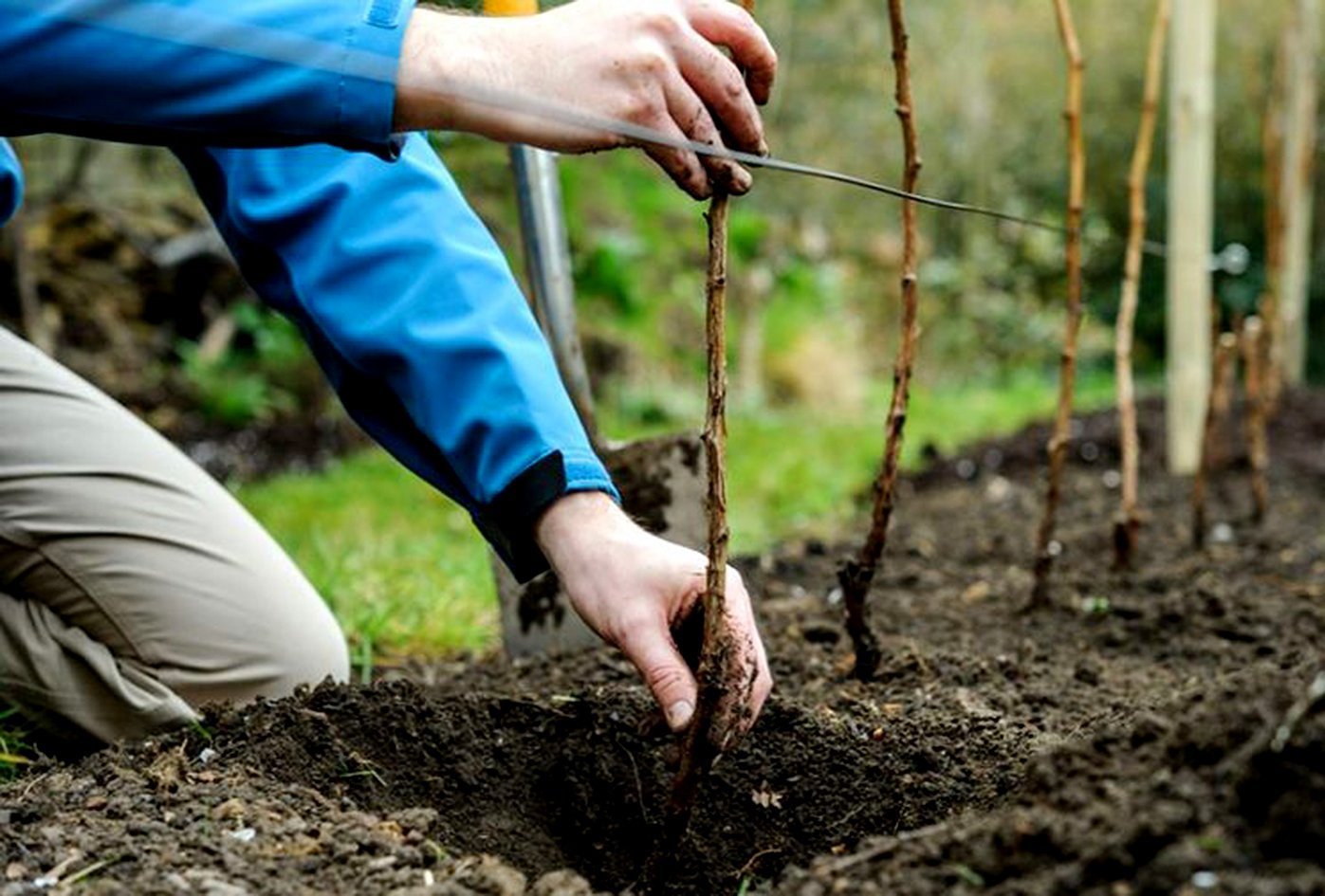 Features planting raspberries in the fall and care for it
Features planting raspberries in the fall and care for it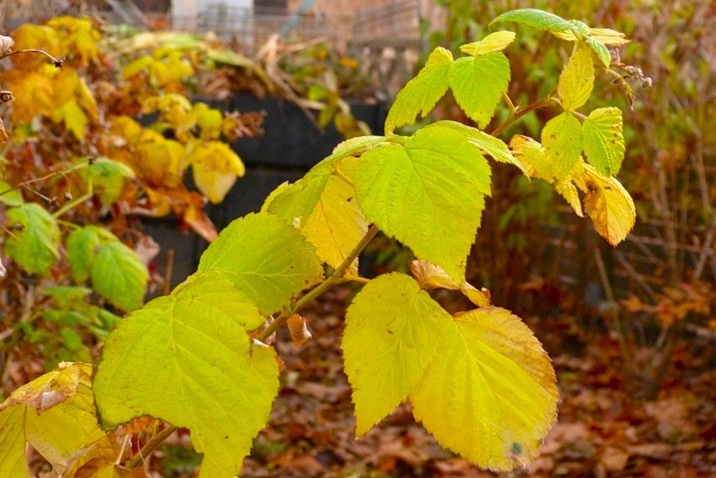 Proper care for raspberries in the fall and its preparation for winter
Proper care for raspberries in the fall and its preparation for winter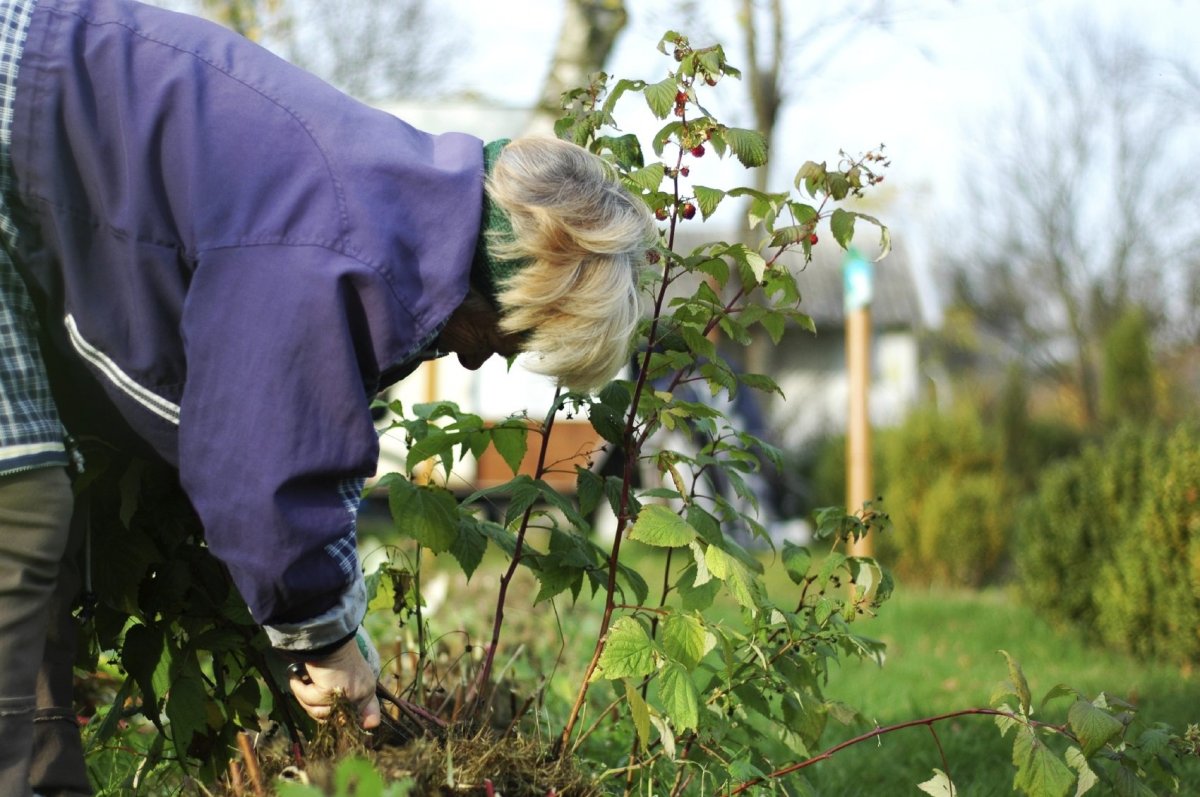 Care for maintenance raspberries in autumn: pruning and top dressing
Care for maintenance raspberries in autumn: pruning and top dressing